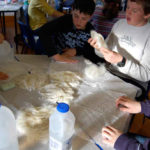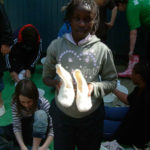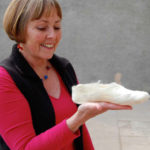This evening’s post comes from Yuli Sømme with whom Paula Wolton has worked since the outset of the One Hut Full project. In these short texts she explores the many ways in which she works with wool to help us better connect this material with its origins in the land.
Feet Felt
“We’re going to wet patches of wool with soap and water, then you take it in turns to dress each others feet in layers of these patches. Then you put the bread bags over your feet and push them into your boots. Then we’re going to explore the farm”.
I introduce the concept of dressing each others’ feet in wool to 30 teenagers at Farms for City Children in the heart of Devon, there is first a sense of nonchalance, followed by horror, a dash of ‘whatever’ and awe. By the end of the session there are 30 or so pairs of ethereal wool moulds of the children’s feet. Through a process of active enchantment, children have experienced transformation of a raw material into felt through the friction of their feet by exercise.
Ceremony
If you take a square of felt and fold it to form an origami swan (with a stitch here and there to hold it together), it will float on water. To mark a life changing event in a person’s life, the making of this form gives a chance to make ceremony through craft, brings people together, writing messages/poems/prayers, sending the swan on it’s journey down a river, perhaps.
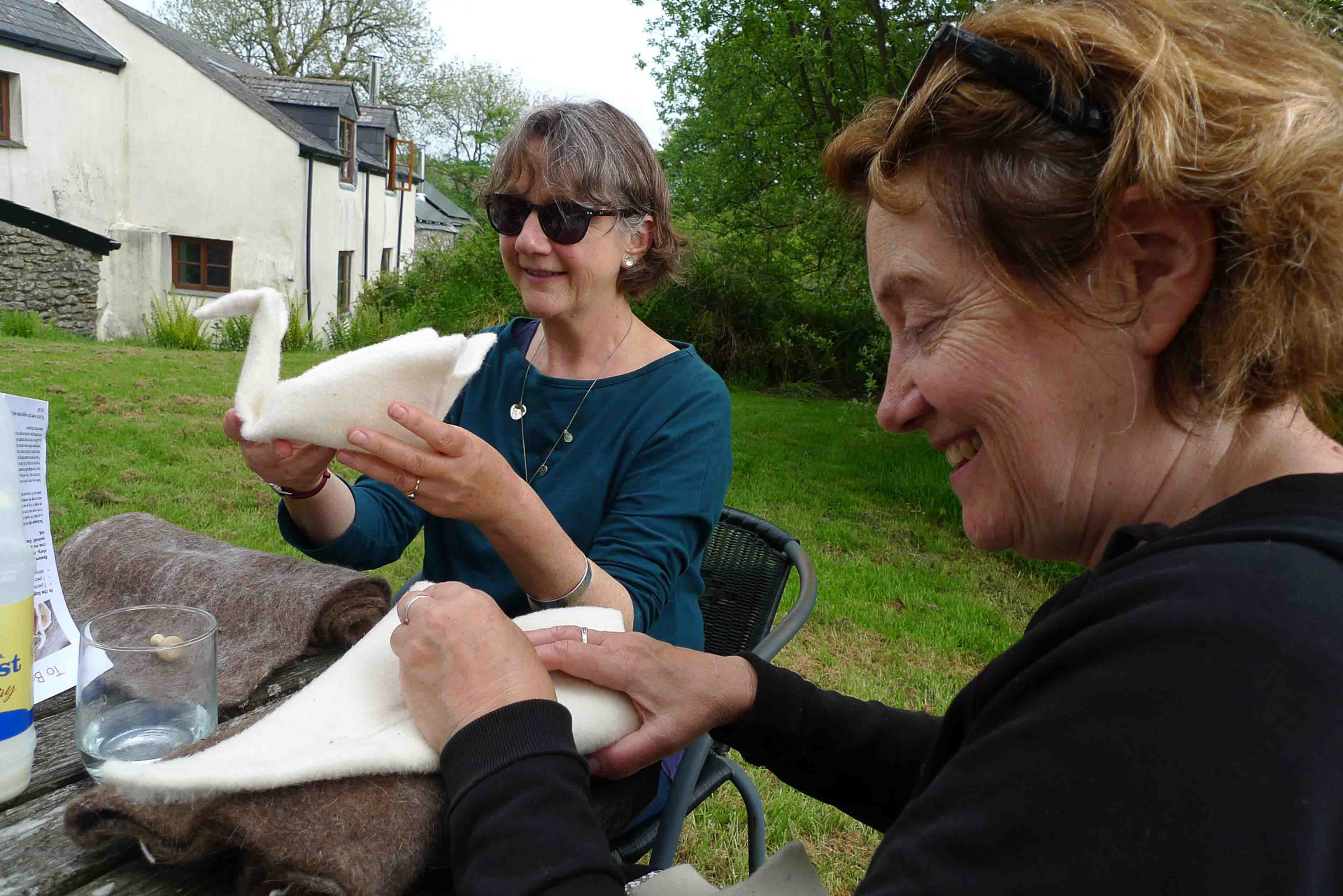
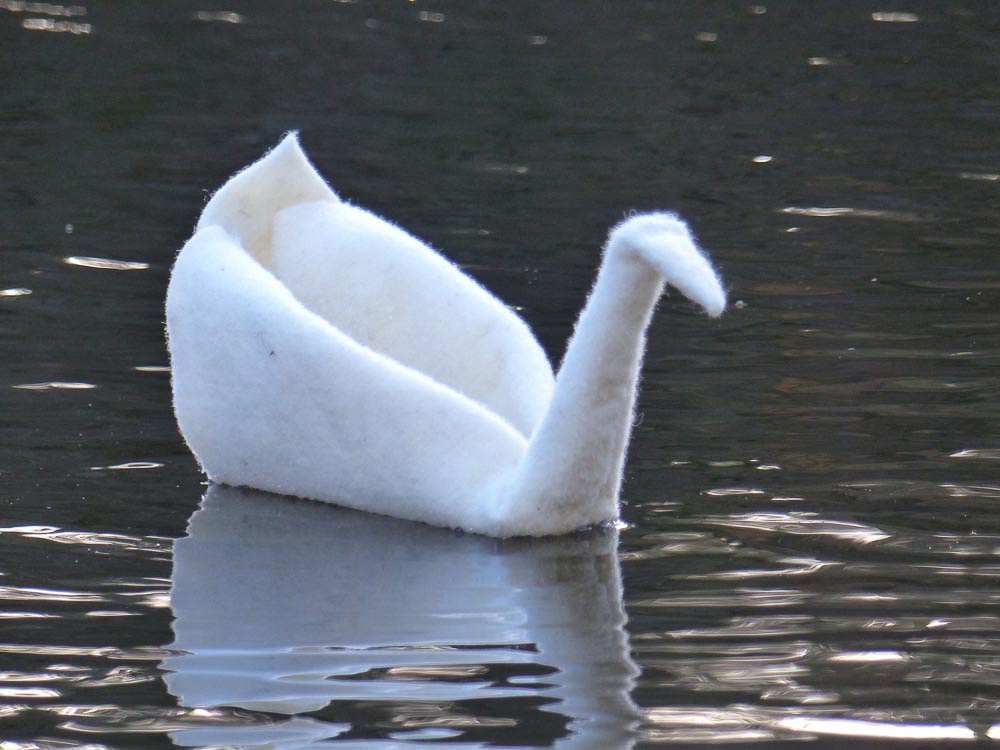
Connection
There is tenderness in wool. It holds memory by taking on the smell and shape of a wearer. As a child, I sought comfort and solace by wrapping myself in my mother’s Norwegian knitted jacket. Over the years I learnt the techniques and found knitting both calming and meditative. Wool connects us with each other, with Nature and the environment. Children could learn everything they need for living if the weaving of wool was introduced into educational policy; it teaches biology (origin of the fibre), geography (distribution and culture of the fibre), science (biomechanics, biochemistry), maths (diameter of yarn, shrinkage percentage, arithmetics), history (trade, enterprise, industrial revolution), art (colour theory and design) and literature (Shakespeare, George Elliot, Elisabeth Gaskell).
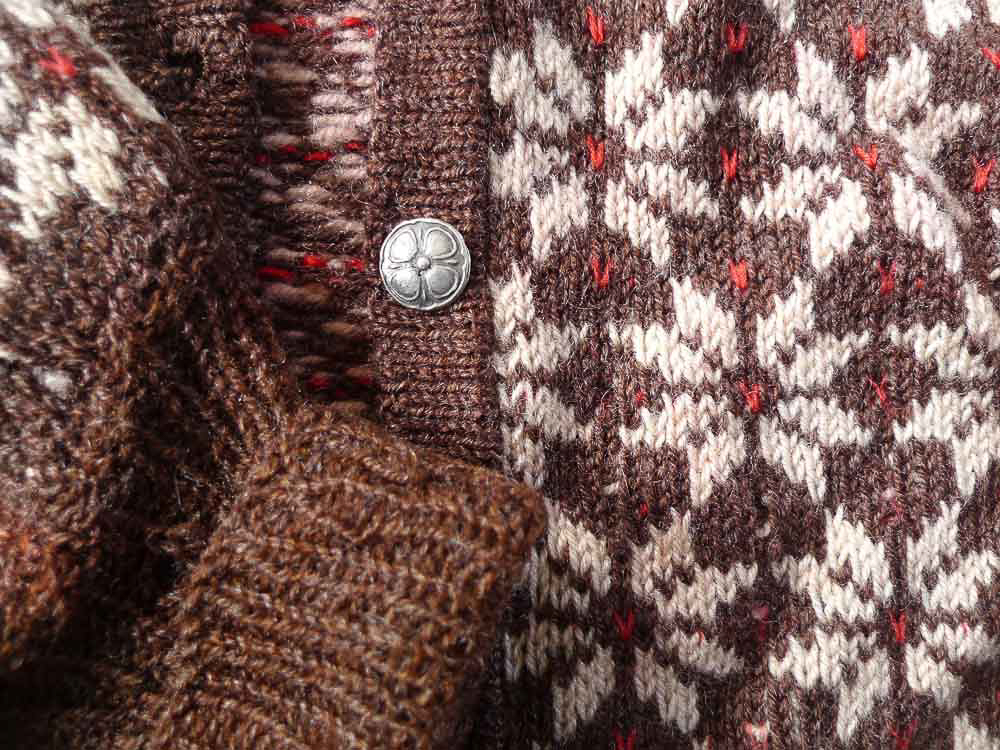
Cycle of Life
A 17th Century British law decreed that the dead must be buried in wool. My work to revive the ancient practice of wool burial brings a more ancient sensibility to funeral ceremony. It also addresses the urgent need to make funerals more ecological and less environmentally damaging. I have witnessed many people find connection with Nature and each other through wool burial. The woolly cocoons are comforting and tactile. What could be more connecting and circular than shrouding a body in wool, to be returned to the land, possibly where sheep are grazing? Wool is the only fibre we currently still grow and process commercially for use. All other fibre and fabric production is now an import, mostly from China. Find another plant or animal we can grow in the UK that provides both protein and fibre in return for grazing, without the need for ploughing, chemicals or shipping.** Let me know if you find anything. In the meantime, I’m sticking with wool, and carbon remains in the ground where we need it to be.
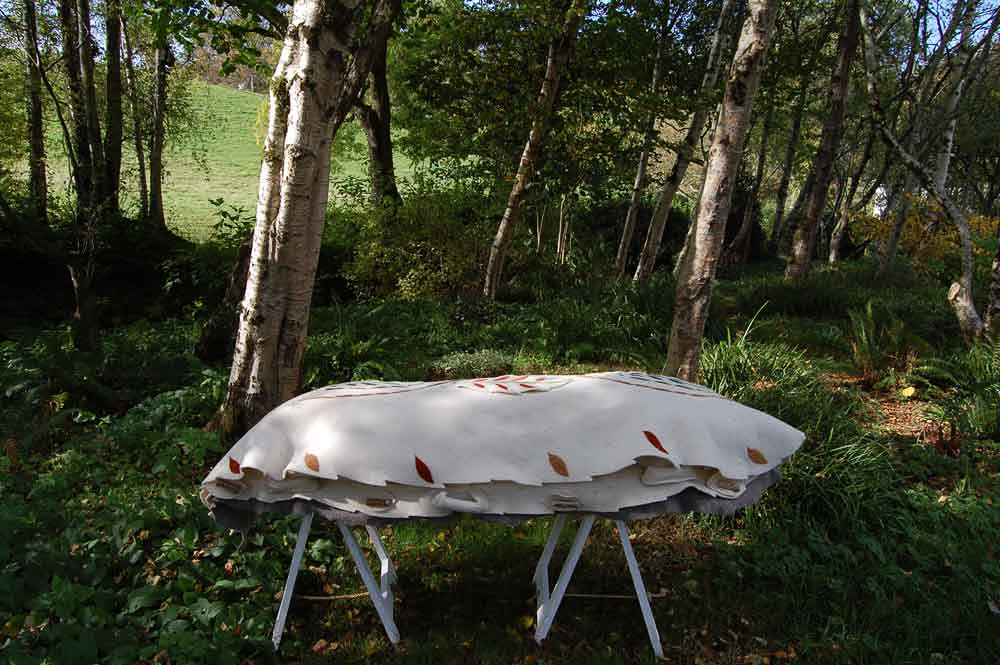
Visit: www.bellacouche.com
Also on Facebook, Twitter, Instagram and Pinterest
** Recommended reading: “Carbon Fields” by Graham Harvey

